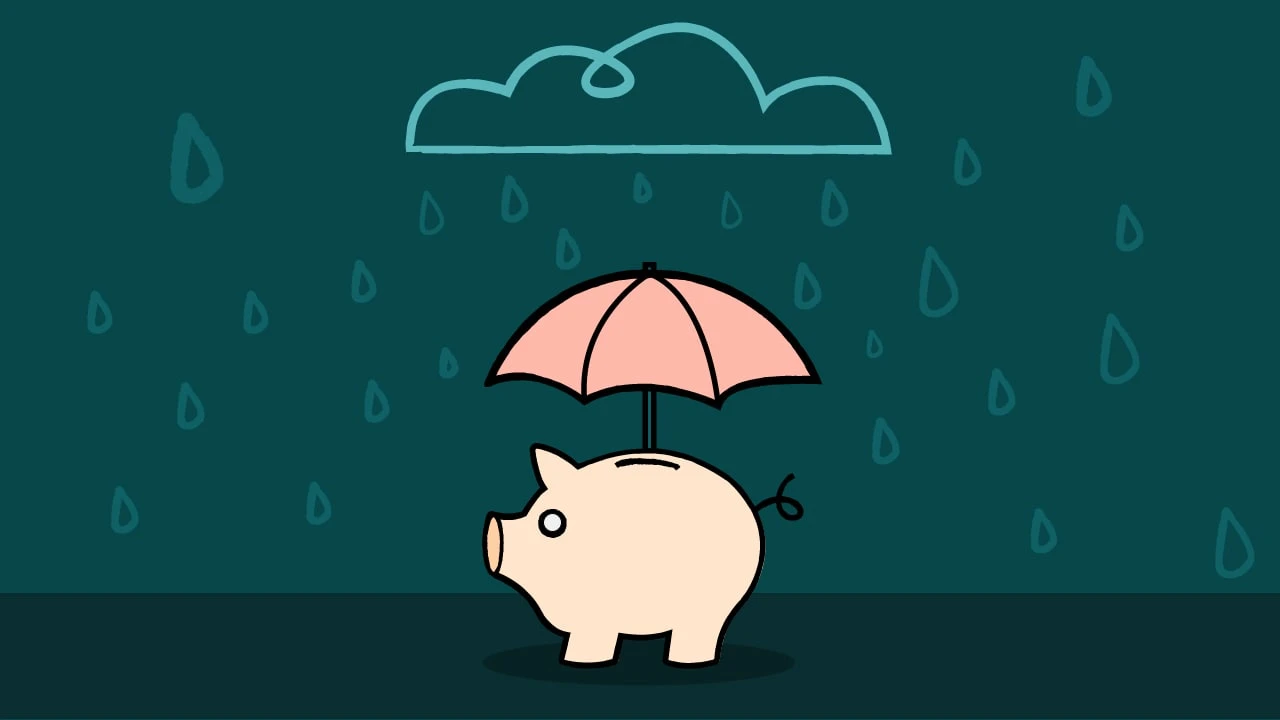Related Articles
When It Rains, It Pours: Why Rainy Day Funds Make Sense
Jenius Bank Team
Updated 6/25/2025
• Originally Published 7/10/2023
Money ManagementSaving & Checking
Having money set aside for unexpected expenses may make it easier to weather storms that come your way. While many of life’s expenses are planned, some events take us by surprise. Maybe you got into a fender bender in the grocery store parking lot. Or perhaps your washing machine stopped working in the middle of laundry day. Whatever your unexpected expenses are, they could take a toll on your finances if you’re not prepared.Rainy day funds may help you deal with those unexpected expenses without dipping into other savings or taking on extra debt. Let’s look at how these funds work and why they’re a good idea.
Key Takeaways
- Rainy day funds are different from emergency funds in that they help you cover smaller unexpected expenses.
- The amount of money you should keep in your rainy day fund depends on your finances and lifestyle.
- Keeping your rainy day fund in a high-yield savings account (HYSA) may help you grow your balance while still giving you easy access to the money when you need it.
What Is a Rainy Day Fund?
Rainy day funds are dedicated savings accounts designed to help cover smaller unexpected expenses that may otherwise put a strain on your budget or encourage you to take on debt. These costs may include expenses like:- Repairing a broken appliance
- Fixing a minor car problem
- Paying for an unanticipated doctor’s appointment
Rainy Day Funds vs Emergency Funds
Though both rainy day funds and emergency funds help you cover unexpected costs, they serve different purposes. Emergency funds are ideal for major unexpected expenses like getting laid off from a job or major medical bills. Rainy day funds are ideal for smaller unexpected expenses like fixing a broken fridge or replacing your car tires.Depending on your lifestyle and personal preferences, you may keep anywhere from a few hundred to a few thousand dollars in your rainy day account. For emergency funds, experts typically recommend that you keep 3-6 months’ of living expenses in available.1Who Needs a Rainy Day Fund?
Just like emergency funds, rainy day funds are a good idea for just about everyone. They may help reduce the risk of going into debt just to cover added expenses. And they could help you stick to your budget even when the unexpected pops up.Without a rainy day fund, you may be tempted to rely on credit cards. While that high credit card limit may seem like a great emergency cushion, it could get you in trouble quickly if you carry a balance from month to month. With the average credit card rate hitting over 25.00% APR2, the interest you owe on your balance could add up. APR refers to Annual Percentage Rate, the interest costs you owe to the lender.Say you’re carrying a balance of $10,000 on a card with a 27.00% APR. If it takes you a year to pay off the balance, you would pay $1,522 in interest in addition to the original $10,000.3With a rainy day fund in place, you could save thousands of dollars in interest payments.How Much Should You Keep in Your Rainy Day Savings Account?
As we mentioned earlier, there’s no hard and fast rule about how much money you should save in your rainy day fund. But there are a few factors to help you decide on your ideal balance.- Do you own or rent? If you’re a homeowner, your rainy day fund should account for regular home maintenance like broken appliances and minor repairs. If your home is older, you may need to set aside more. If you rent, repairs and maintenance may be covered by your landlord, so you may be able to set less aside.
- Do you have pets? Even an annual trip to the vet may result in a higher-than-expected bill. As pets age, you may need to spend more on their care, so keeping more in your rainy day fund could help.
- Do you have kids? Children are full of (expensive) surprises, from extra trips to the doctor’s office or surprise extracurricular activities. Keeping more in your fund could help you cover those costs.
- What are your insurance deductibles? Insurance is there to help reduce the cost of covered events, but they usually come with a deductible. If your deductibles are high, you may want to keep enough in your rainy day fund to cover them.
- What have previous unexpected expenses cost? Look at the expenses that snuck up on you over the last year. Total these up and use this number to help you set your goal.
- What do you worry about most? If you have specific expenses that keep you up at night, make sure you have enough in your rainy day fund to cover them.
